
Roots
The whisper of leaves in ancient groves, the rustle of a grandmother’s hand through coiled strands—these sensations evoke a profound truth ❉ textured hair, in its myriad formations, carries memory. From the tightest coils to the softest waves, each strand is a living archive, a scroll upon which generations have inscribed stories of resilience, artistry, and a deep connection to the Earth. For those whose ancestry traces through the intricate paths of Black and mixed-race heritage, hair is not merely adornment; it is a sacred conduit, a visible declaration of spirit.
To truly comprehend how oiling preserved the cultural meaning of textured hair through history, we must first attune ourselves to the very structure of these magnificent strands and the ancestral lexicon that shaped their care. This understanding forms the bedrock, revealing the elemental kinship between oils, textured hair, and the enduring legacies they uphold.

Hair Anatomy and Ancestral Wisdom
The unique helical structure of textured hair, with its elliptical cross-section and numerous twists and turns, provides a natural canvas for absorbing and holding the nourishing lipids from oils. Unlike straighter hair types, the bends and curves create more opportunities for the cuticle scales to lift, making textured hair more prone to moisture loss, but also exceptionally receptive to emollients. Ancestors, long before the advent of modern chemistry, understood this inherent need.
They observed, learned, and refined practices that replenished this vital moisture, intuitively grasping the biology of the strand. Their wisdom was not abstract; it was lived, seen in the glossy sheen of healthy hair, felt in the softness of well-tended coils, and passed down through the generations.
Oiling textured hair transcended mere aesthetic; it was an act of profound preservation, safeguarding not only the physical strand but the very essence of cultural identity and ancestral knowledge.

Language of Locks and Ancestral Practices
The language we use to describe textured hair today often falls short, yet in ancestral communities, a vocabulary existed that spoke to the intimate relationship between hair, care, and identity. These terms often intertwined with the names of plants, rituals, and the qualities of healthy hair that oiling helped maintain.
- Ozondato ❉ Among the Himba tribe of Namibia, young girls wear two braids called ozondato, symbolizing youth and innocence. The meticulous care of these braids, often involving a mixture of red ochre and animal fat or butter, underscored a girl’s transition through life stages, publicly declaring her place within the community.
- Lwil Maskrit ❉ In Haitian Creole, this term for Haitian Black Castor Oil speaks to a tradition dating back to 1625, where it was considered a “universal cure-all.” Its continued use highlights how specific oils became so deeply ingrained in a community’s health and beauty practices they earned their own linguistic identity.
- Karite Tree ❉ The very name for the shea tree, Vitellaria paradoxa, translates to “tree of life” in some West African languages, reflecting the reverence for shea butter and its myriad uses, including haircare, a practice documented as far back as the 14th century.
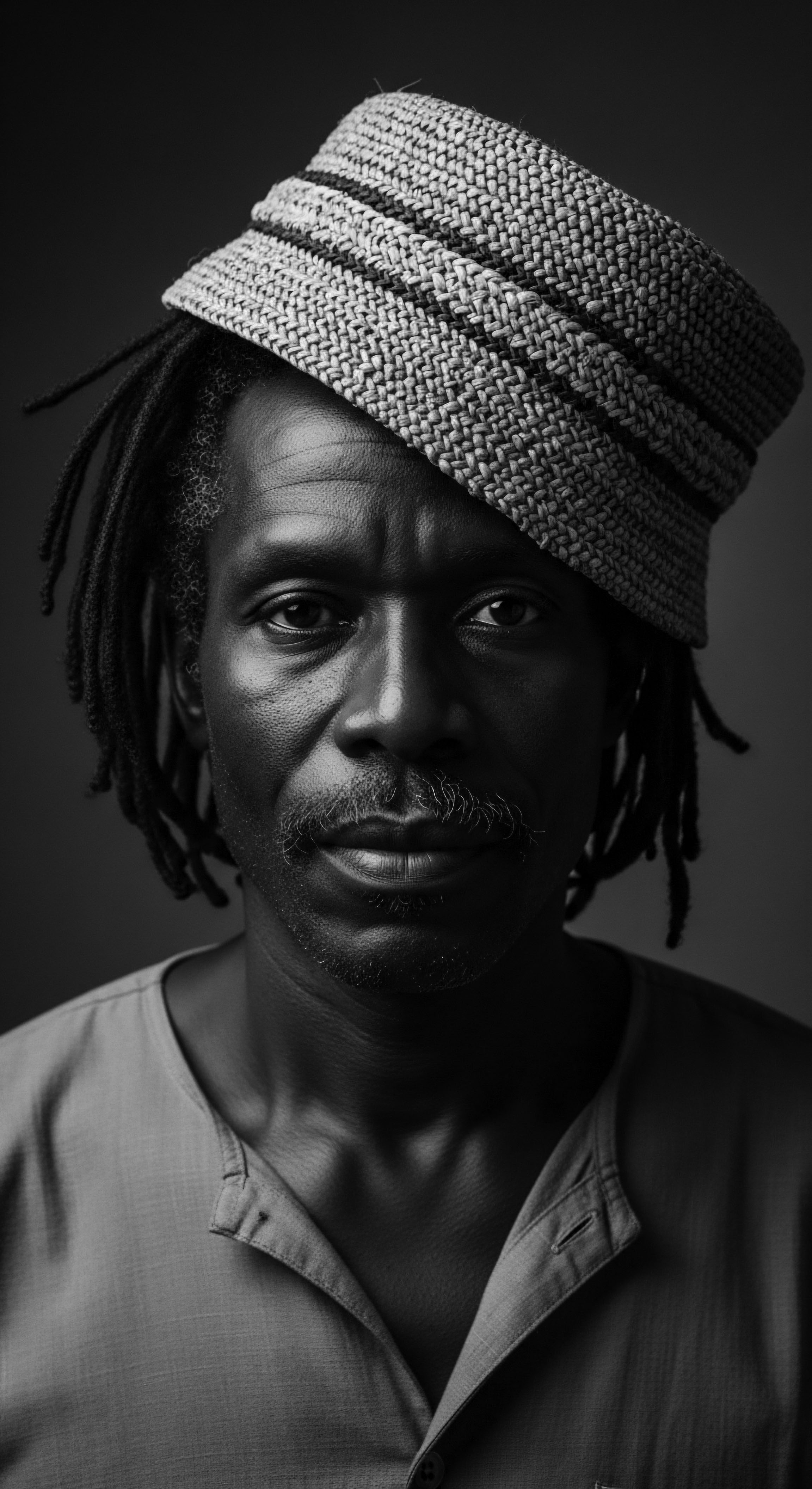
Environmental Response and Traditional Solutions
Textured hair, originating in climates that often presented environmental extremes, developed a natural need for protection. The sun’s intense rays, dry winds, and dust required external shields. Oils, derived from indigenous flora, offered precisely this. Ancient Egyptians, for instance, relied on natural oils such as castor and almond to combat the harsh drying effects of the desert, enhancing shine and preventing breakage.
This practice was not simply about beauty; it was a pragmatic response to environmental challenges, a testament to ancestral ingenuity. The application of oils provided a protective barrier, reducing moisture loss and maintaining the hair’s integrity against the elements, allowing styles to persist and their meanings to endure.
| Traditional Oil Shea Butter (Karite) |
| Primary Cultural Origin West Africa (Ghana, Mali, Burkina Faso) |
| Historical Application for Hair Moisturizer, sealant, sun protection, styling aid, healing balm. |
| Enduring Cultural Meaning "Women's Gold," resilience, care, economic sustenance, purity. |
| Traditional Oil Castor Oil (Lwil Maskrit, Jamaican Black Castor Oil) |
| Primary Cultural Origin Africa, Caribbean Diaspora (Haiti, Jamaica) |
| Historical Application for Hair Nourishment, growth stimulation, scalp health, shine. |
| Enduring Cultural Meaning Versatility, remedy, cultural preservation against hardship. |
| Traditional Oil Coconut Oil |
| Primary Cultural Origin Ancient Egypt, parts of Africa |
| Historical Application for Hair Moisturizer, protective coating, scalp health. |
| Enduring Cultural Meaning Holistic health, spiritual connection (in some traditions). |
| Traditional Oil Moringa Oil |
| Primary Cultural Origin Ancient Egypt, parts of Africa |
| Historical Application for Hair Lightweight nourishment, antioxidant protection, promoting growth. |
| Enduring Cultural Meaning Reverence for nature's gifts, luxury, vitality. |
| Traditional Oil These foundational oils embody centuries of accumulated wisdom, reflecting an intimate relationship between ancestral communities and their natural environment in the pursuit of hair health and cultural expression. |

Ritual
The hands that smoothed oils onto a loved one’s hair performed more than a physical act; they enacted a ritual. These were moments of quiet communion, of intergenerational transmission, where the subtle aroma of shea or the thickness of castor oil became intertwined with stories, warnings, and whispered blessings. The application of oils was inseparable from the creation and maintenance of textured hairstyles, styles that themselves were living documents, broadcasting messages of status, age, marital state, and tribal allegiance to an attentive community. The art and science of styling textured hair, therefore, holds oiling as a central, indispensable element in its heritage, transforming practical needs into profound expressions of cultural identity.

Protective Styling Ancestral Roots
Before the term “protective style” entered common parlance, African communities were adept at creating intricate hair configurations that shielded strands from environmental damage while communicating complex social information. Braids, twists, and locs, some dating back millennia, relied on the conditioning and sealing properties of oils and butters. The rich, emollient oils allowed for smoother manipulation of hair, reducing breakage during the braiding process and sealing the hair’s outer layer to preserve moisture within the style for extended periods.
This practical function served a higher purpose ❉ ensuring the longevity of styles that held deep cultural significance, styles that often took hours or even days to craft within communal gatherings. For example, the detailed cornrows of West Africa, which informed the creation of iconic African American styles, required lubricated strands to achieve their enduring form and meaning.

Natural Styling and Defined Beauty
The definition inherent in textured hair—its coils, curls, and kinks—was often enhanced and celebrated through the application of oils. These natural formulations provided the necessary slip and moisture to allow individual curl patterns to express themselves, rather than frizzing or becoming unruly in harsh climates. The act of oiling helped to group strands, creating the visual clarity in styles that denoted care, intention, and, crucially, a respect for the hair’s natural form.
This cultural reverence for defined textured hair was not about adherence to a singular beauty standard but a celebration of the hair’s unique genetic blueprint, amplified by traditional oiling techniques. In many traditional settings, the application of oils was performed as part of a collective activity, strengthening social bonds through shared grooming.
Within communal hair-braiding circles, often lasting hours or days, oils were not just products but silent participants, enabling the creation and preservation of styles that spoke volumes about identity and lineage.

Tools and The Oil Application
The traditional toolkit for textured hair care might appear simple, but its effectiveness was undeniable, often working in concert with the properties of various oils. Wide-toothed combs, crafted from wood or bone, moved more easily through lubricated hair, preventing undue stress. Fingers, perhaps the most ancient and intimate tools, applied the oils directly to the scalp and along the length of each section, allowing for a sensitive understanding of the hair’s condition and ensuring even distribution.
The historical use of specific tools alongside oils meant that the act of grooming was a tactile experience, a connection to the hair’s unique needs. This physical interaction fostered a deep practical understanding of how best to manage and adorn textured hair, a practice passed from mother to daughter.
| Styling Technique Braiding/Twisting (e.g. Cornrows, Bantu Knots) |
| Oiling's Contribution to Technique Increased pliability, reduced breakage, sealed ends, added sheen, moisture retention. |
| Cultural Link Preserved by Oiling Longevity of symbolic styles, comfort during long styling sessions, visual clarity of intricate patterns, community bonding rituals. |
| Styling Technique Loc Formation/Maintenance |
| Oiling's Contribution to Technique Scalp health, moisture for loc integrity, reduced friction, spiritual purity. |
| Cultural Link Preserved by Oiling Adherence to spiritual or social commitments, cleanliness, symbolic growth. |
| Styling Technique "Threading" or "Wrapping" |
| Oiling's Contribution to Technique Lubrication for ease of wrapping, protection from environmental damage, setting curl definition. |
| Cultural Link Preserved by Oiling Protection of hair length, specific social signaling through style. |
| Styling Technique Oiling was not a mere adjunct to styling; it was a core enabling factor, allowing for the creation and endurance of hair expressions that carried profound cultural narratives. |
The practice of oiling, from ancient Egypt to West African and Caribbean traditions, highlights a continuity of care. Ancient Egyptians used oils like castor and almond, alongside beeswax, for styling and protection, demonstrating a timeless understanding of their hair’s needs. These applications were about more than just a sleek appearance; they served to protect the scalp and hair from the arid desert climate, a practical reality that directly influenced the longevity of elaborate styles worn to convey status and beauty. The blending of oils with earth materials, as seen with the Mwila tribe in Angola mixing oncula (crushed red stone) with oil, further illustrates how oiling was integrated into culturally specific expressions that mirrored natural elements and reinforced social standing.
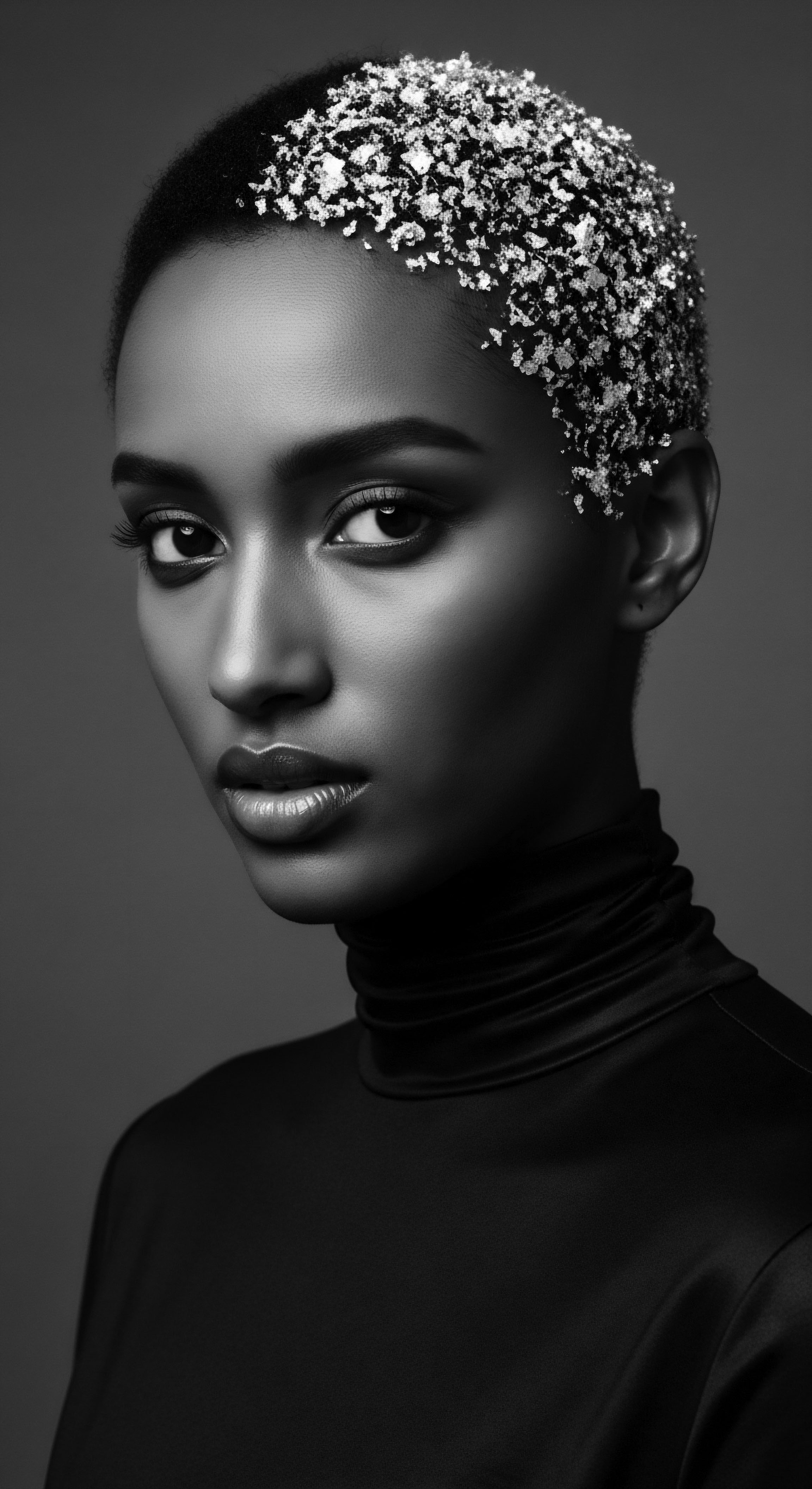
Relay
The enduring spirit of textured hair, its vibrancy and inherent strength, has found a faithful companion in the art of oiling. This practice, passed from elder to youth, from ancestor to descendant, has acted as a vital relay, ensuring the continued journey of cultural meaning through epochs of change and challenge. From the intimate moments of nighttime rituals to the broader landscape of holistic wellness, oiling stands as a testament to inherited wisdom. It addresses concerns not just of physical hair health but of ancestral health, connecting contemporary care practices to deep historical roots, making the strands a living, breathing testament to resilience and identity.

What Ancestral Wisdom Guides Modern Regimens?
Traditional regimens were not arbitrary; they stemmed from generations of observational science and a profound understanding of the natural environment. The deliberate selection of specific oils, often indigenous to the region, and their consistent application formed the basis of care that kept textured hair healthy despite diverse environmental conditions. This ancestral wisdom, for instance, emphasized the periodic deep oiling of the scalp and strands to maintain moisture and flexibility, a practice now validated by modern trichology which identifies the cuticle’s role in moisture retention and the benefit of occlusive agents.
Consider the case of Shea Butter, a staple across the “Shea Belt” of West Africa, spanning 21 countries. For millennia, West African women have hand-harvested and processed shea nuts to extract this precious butter, known as “Women’s Gold.” They used it not just for skin but extensively for hair, applying it to protect against harsh climates, moisturize, and maintain intricate styles. This was not merely a cosmetic choice; it was a survival strategy. Shea butter’s rich composition of fatty acids, vitamins A, E, and F, provided a sealant that helped trap moisture, reduce environmental stress, and even offer mild sun protection.
The meticulous, time-honored process of its creation—from drying nuts to hand-kneading the paste—meant that every jar carried the collective intention and skill of generations of women. This deeply embedded practice is not simply about applying a product; it is a continuation of a heritage of self-sufficiency, community economic support, and a profound respect for nature’s gifts. The longevity of shea butter use, sustained by communal efforts and passed down orally, serves as a powerful instance of how oiling preserved both the physical integrity of textured hair and the socio-economic and cultural identity of communities. This long history demonstrates the inherent knowledge within these communities about their hair’s specific needs, a knowledge that modern science now increasingly validates.

Nighttime Sanctum and Oiling’s Legacy
The journey of textured hair through history, particularly through periods of profound cultural upheaval, has meant that care rituals often took on added significance, sometimes becoming clandestine acts of self-preservation. The nighttime, a time for rest and vulnerability, became a sacred space for hair care. The ritual of oiling hair before wrapping it in fabrics, which evolved into the use of bonnets and scarves, served several functions. It protected the hair from friction against rough sleeping surfaces, prevented moisture loss, and allowed the nourishing oils to deeply penetrate.
This practice, deeply rooted in the experiences of the African diaspora, ensured that hair, often a target of dehumanization during enslavement, could be tended to and preserved in private, retaining a sense of dignity and connection to ancestral ways. Even when denied access to traditional African tools and herbs during slavery, enslaved Africans creatively adapted, using what was available—including bacon grease or butter—to care for their hair, demonstrating an enduring commitment to the practice. The very act of covering the hair, a practice sometimes forced upon Black women in history (such as the Tignon Laws in Louisiana in the late 1700s), was subverted into an act of adornment and defiance, often with hair beneath meticulously oiled and styled.
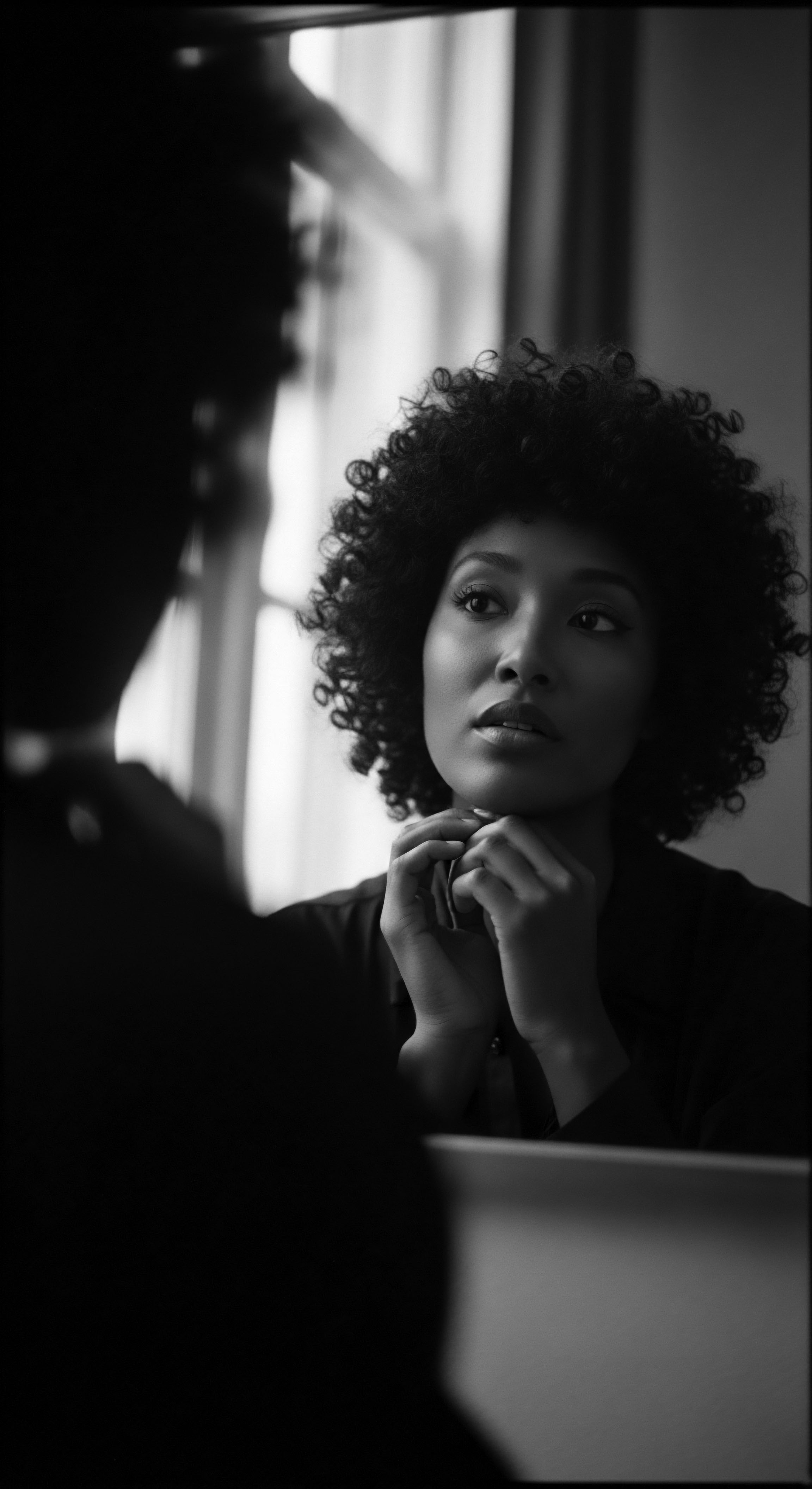
Specific Ingredients and Shared Understandings
The traditional knowledge of hair oiling often involves specific ingredients chosen for their properties, a discernment gained from centuries of close interaction with the natural world. Modern science now offers an understanding of why these choices were so effective, bridging the gap between ancient wisdom and contemporary understanding.
- Ricinoleic Acid ❉ Abundant in castor oil, this fatty acid is known to improve blood circulation to the scalp, promoting hair growth and offering moisturizing benefits. Its traditional use in Jamaican Black Castor Oil, a practice brought to the Caribbean by enslaved Africans, highlights its enduring role in scalp health and vitality, offering remedies for a community historically denied formal medical care.
- Lauric Acid ❉ A primary component of coconut oil, its low molecular weight allows it to penetrate the hair shaft, reducing protein loss and providing deep moisture. This scientific understanding validates the centuries-old practice of using coconut oil for conditioning and strengthening hair.
- Vitamins and Antioxidants ❉ Many traditional oils, such as argan and moringa, are rich in vitamins (A, E, F) and antioxidants. These compounds protect the hair from environmental damage, nourish the scalp, and support overall hair health, explaining their widespread historical use.
The interplay of traditional ingredients and their scientific underpinnings reveals a remarkable continuity of knowledge. The foresight of ancestors in identifying plants with beneficial properties, without the aid of laboratories, speaks volumes about their connection to nature and their commitment to preserving the health and meaning of textured hair. This deep-seated knowledge, passed down through oral tradition and lived experience, is a cornerstone of textured hair heritage.
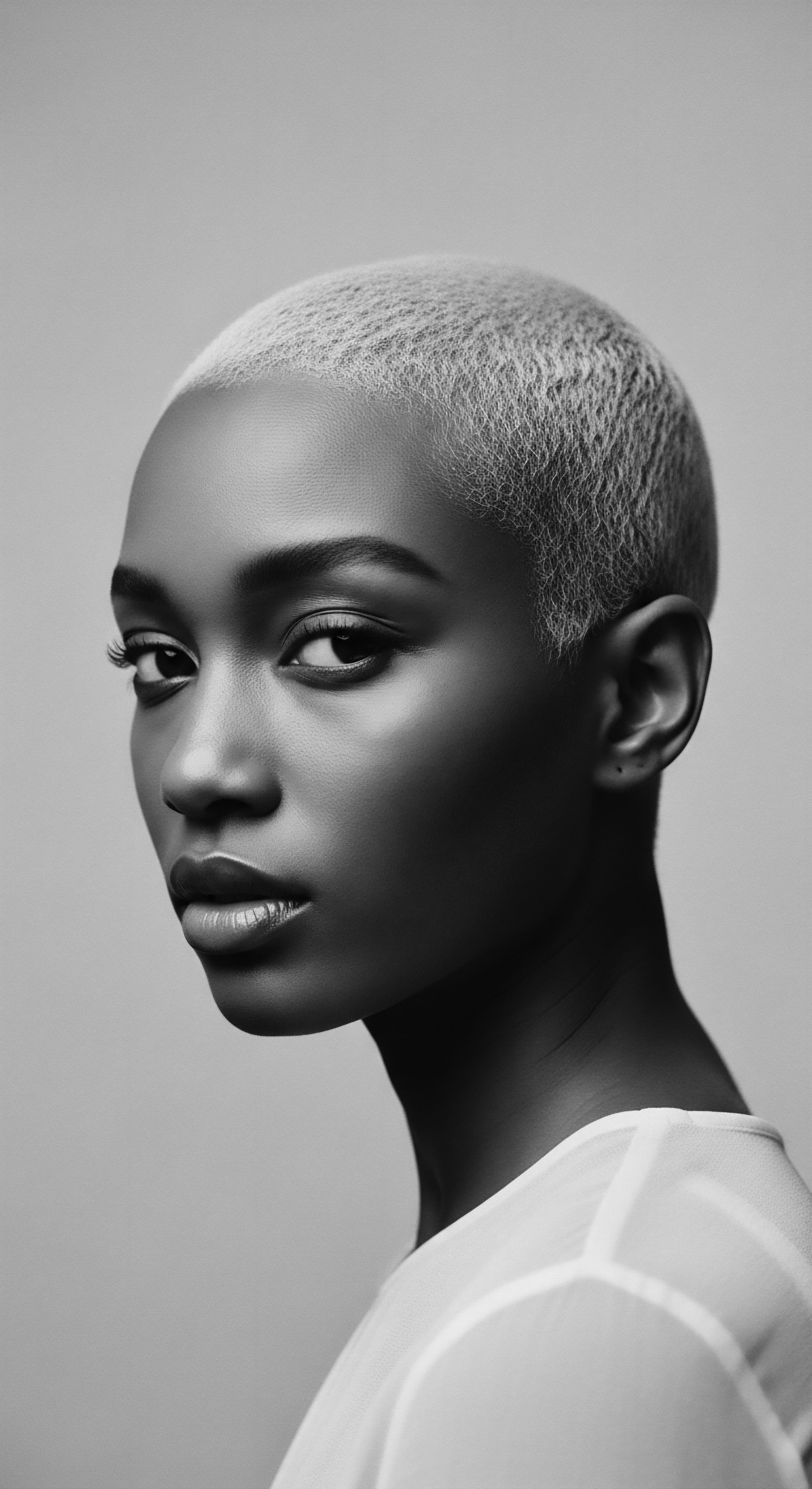
Reflection
The soul of a strand, in its intricate coil and resilient spirit, holds within it the whispers of generations. The ritual of oiling, far from being a fleeting trend, stands as a quiet yet powerful testament to the enduring heritage of textured hair. Through the careful alchemy of plant, hand, and intention, oils have allowed the cultural meaning of these strands to traverse time, surviving forced migrations, societal pressures, and the ebb and flow of beauty standards. Each application of oil, whether a precise scientific measurement in a modern laboratory or a heartfelt massage passed down in a family circle, carries with it an echo from the source—a connection to ancestral wisdom, to the earth, and to the inherent worth of one’s identity.
The continued practice of oiling is not simply about maintaining hair; it is about honoring a lineage, celebrating resilience, and affirming the profound, living archive that textured hair represents. It is a quiet revolution, a return to the natural rhythms of care that have always celebrated the unbound helix, allowing it to unfurl its heritage for all to witness.
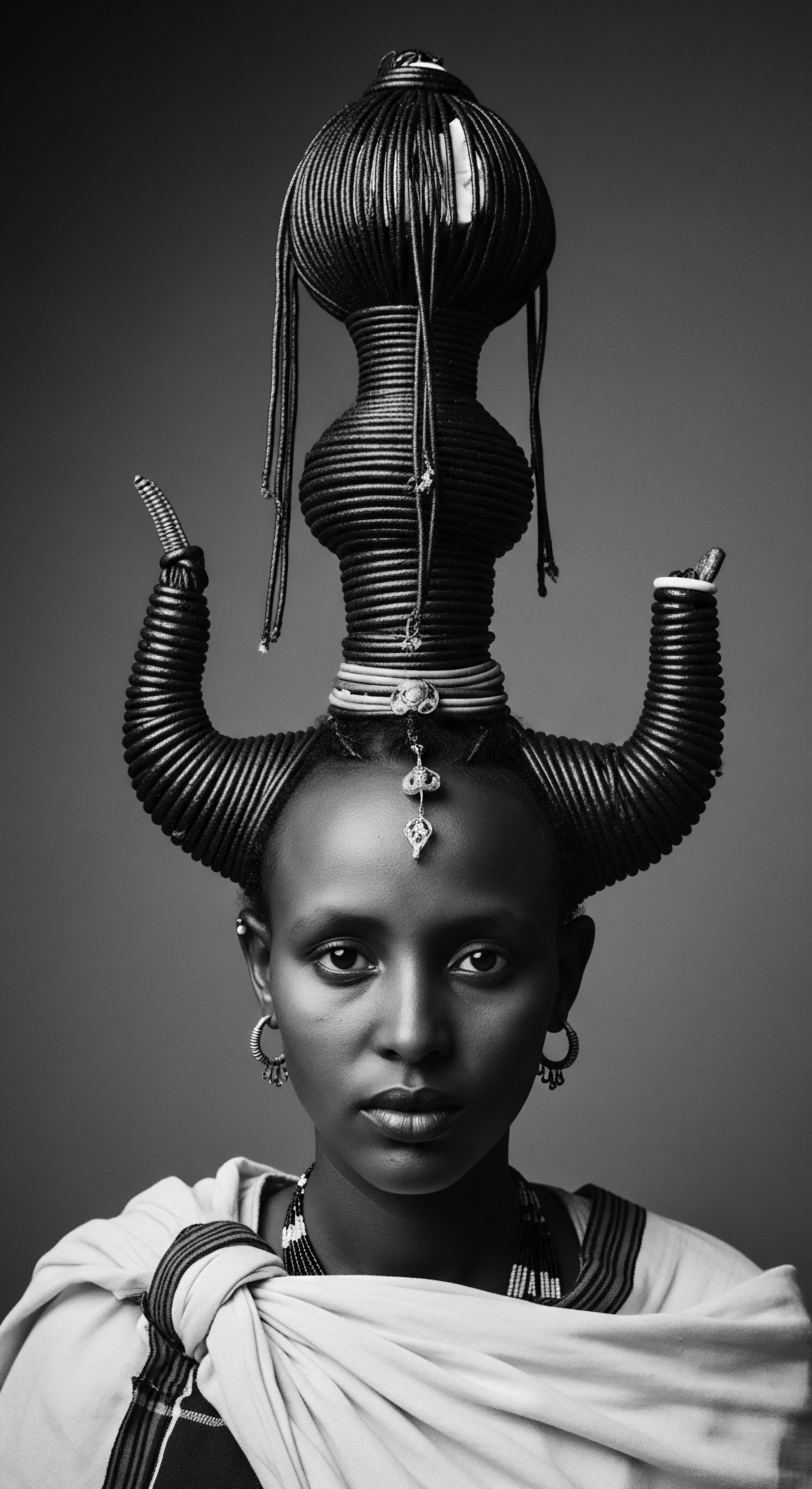
References
- Byrd, Ayana D. and Lori L. Tharps. Hair Story ❉ Untangling the Roots of Black Hair in America. St. Martin’s Griffin, 2002.
- Dabiri, Emma. Twisted ❉ The Tangled History of Black Hair Culture. Harper Perennial, 2020.
- Davis-Sivasothy, Audrey. The Science of Black Hair ❉ A Comprehensive Guide to Textured Hair Care. Sivasothy Publishing, 2011.
- Ellington, Tameka, and Joseph L. Underwood. Textures ❉ The History and Art of Black Hair. Schiffer Publishing, 2020.
- Rooks, Noliwe M. Hair Raising ❉ Beauty, Culture, and African American Women. Rutgers University Press, 1996.
- Leach, Edmund. “Magical Hair.” Journal of the Royal Anthropological Institute, 1958.
- Tarlo, Emma. Entanglement ❉ The Secret Lives of Hair. Oneworld Publications, 2016.
- Aremu, Omotayo. “Hair Oiling and its Recent Resurgence in the Western Market.” City Tech OpenLab, 2021.
- McIlvaine, Anne. “Traditional Indian Hair Oiling Practices.” International Journal of Dermatology, 2014.
- Mohammed, Aisha. “Communal Hair Care Practices and Psychological Well-being.” University of Nairobi, 2023.
